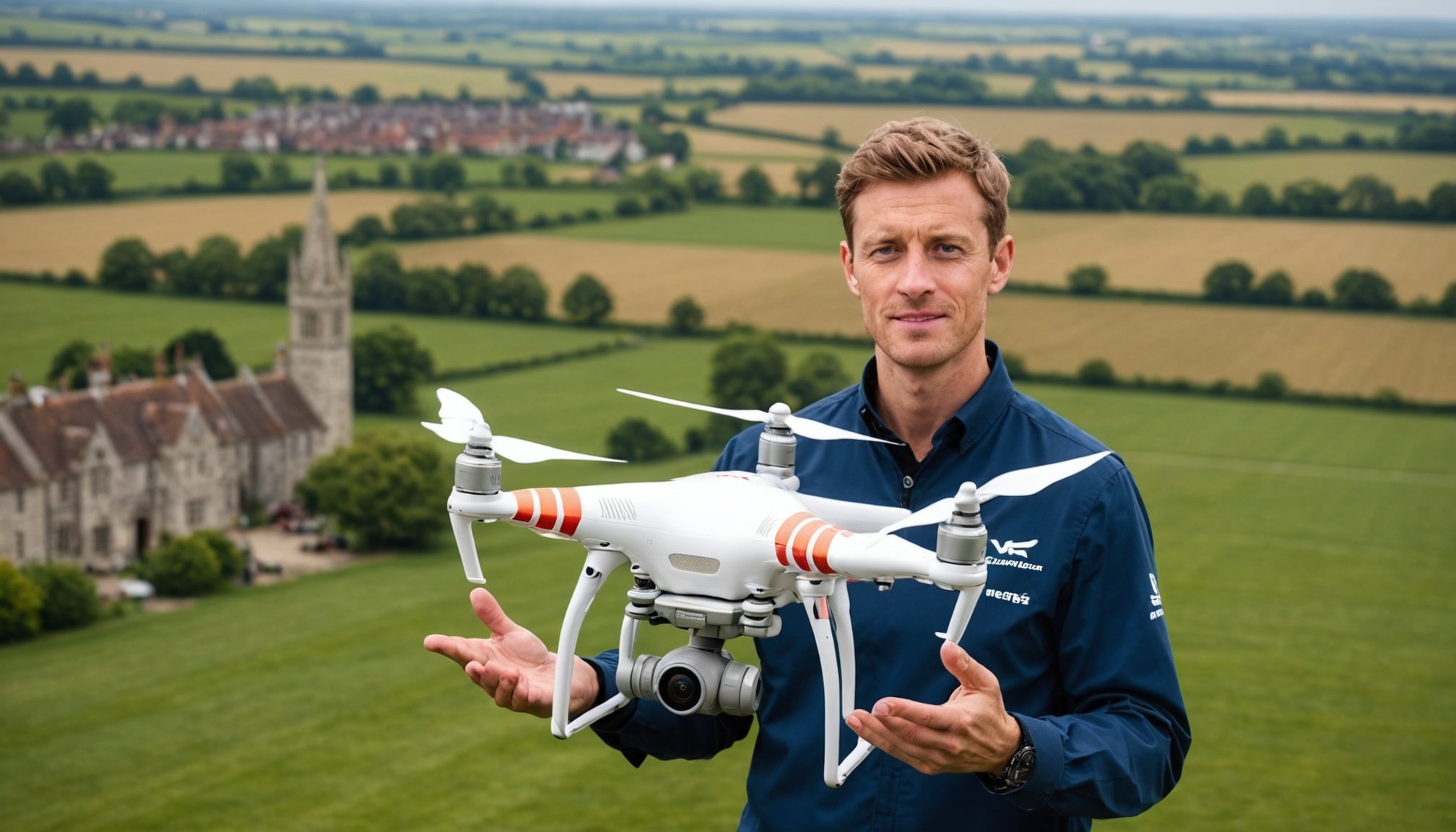Overview of UK Drone Regulations
The UK drone laws have evolved significantly in response to technological advancements and increased drone usage. Initially, the regulatory framework was basic, centering mainly on civil aviation concerns. However, with drones rapidly becoming integral in both leisure and commercial activities, a more comprehensive legal compliance structure was necessitated.
The Civil Aviation Authority (CAA) plays a pivotal role in drone regulation in the UK. It sets forth guidelines that ensure safety and innovation coexist without compromising public or airspace security. The CAA’s regulatory framework covers diverse aspects, from registration of drones to setting pilot qualifications.
Also to read : Cardboard dividers: essential protection for fragile bottles
Key regulations crucially impacting commercial drone use comprise mandatory registration for drones weighing more than 250 grams and clear demarcations of no-fly zones, especially around airports and sensitive areas. Additionally, commercial operators must secure specific permissions for flight, tailored according to the potential risk the drone activity presents. The alignment with these regulations is indispensable for operators to avoid any legal repercussions and ensure smooth operation.
Understanding and adhering to these guidelines not only enhances safety but also facilitates the sustainable growth of the drone industry within legal compliance parameters.
This might interest you : Navigating Legal Hurdles: The Ultimate Guide to Influencer Partnership Risks for UK Brands
Overview of UK Drone Regulations
The UK drone laws have undergone significant evolution, reflecting the rapid growth of drone technology. Historically, the UK was among the first countries to establish a legal framework, recognising the potential and risks drones pose. This early adoption set a precedent for ensuring legal compliance across drone operations.
At the heart of the UK’s regulatory framework is the Civil Aviation Authority (CAA). The CAA is responsible for overseeing drone use and establishing guidelines to ensure safety and security in airspace. They have a detailed regulatory framework, designed to govern both recreational and commercial drone operations.
Key regulations impacting commercial drone use include the requirement for pilots to register their drone if it weighs between 250g and 20kg and obtain necessary permissions for commercial activities. Compliance with these rules is essential for operators to conduct their activities legally, helping to mitigate risks and avoid penalties. The CAA updates these regulations regularly, keeping pace with technological advancements and usage patterns. Understanding this regulatory framework is crucial for anyone involved or interested in drone operations in the UK, ensuring they can operate responsibly and within the law.
Licensing and Certification Requirements
Navigating the drone pilot licensing landscape is crucial for commercial drone operators in the UK. Key to this process is understanding the types of licenses required, such as the A2 Certificate of Competency or the Operational Authorisation under the Specific Category, which allows for operations with increased risk.
To obtain necessary certifications, operators must follow a series of steps. First, they need to undergo recognised training by an approved organisation. This training is designed to meet certification standards and includes both theoretical knowledge and practical skills. After training, candidates must pass exams to demonstrate their understanding and ability to operate drones safely and competently.
Compliance with updated regulations is paramount. As technology and regulations evolve, staying informed about changes ensures operators meet legal requirements. Compliance is not static; it requires continuous learning and adaptation to maintain certification and legal standing.
These steps protect operators and their businesses, ensuring safe and lawful drone operations. By maintaining compliance, operators can fully realise the advantages drones offer in a rapidly developing industry while minimising risk and liability.
Operational Limitations and Airspace Management
Understanding airspace regulations is essential for safe and legal drone operations in the UK. The concept of no-fly zones is crucial: these are designated areas where drone usage is either prohibited or heavily restricted. Such zones typically include proximity to airports, military bases, and certain public spaces. Recognising these zones ensures compliance and helps prevent incidents with manned aircraft.
Operational boundaries define the permissible altitude and distance for drone flights. Generally, drones in the UK must not exceed 400 feet in altitude. This helps avoid interference with other aircraft that operate at higher altitudes. As for horizontal distance, drones should remain visible to the operator at all times, promoting safety protocols.
To further ensure safe operations, drone pilots must understand how to interact with manned aircraft. This includes understanding emergency protocols, such as moving to a safe distance when aircraft are nearby. As an extra safety measure, keeping abreast of potential temporary flight restrictions, often communicated via Notices to Airmen (NOTAMs), is advised. Consistent adherence to these guidelines not only enhances safety but also supports progressive drone integration into the UK airspace system.
Insurance and Liability Considerations
Navigating the landscape of drone insurance is essential for any commercial operator aiming to mitigate risks and protect their ventures. Adequate insurance covers various incidents, safeguarding operators against unforeseen accidents or damages. Liability coverage ensures protection in cases of property damage or personal injury, forming a crucial layer of risk management.
There are several types of insurance coverage available. Operators can opt for third-party liability insurance, which covers damages inflicted on people or property. Hull insurance is another option, providing protection against physical damage to the drone itself. Beyond these, comprehensive policies may include coverage against theft, loss in transit, and even cyber liabilities.
Consider a company using drones for aerial photography. In one case study, a sudden malfunction resulted in a drone crashing onto a parked car. The operator’s insurance policy fully covered the repair costs, avoiding a substantial financial burden. This highlights the importance of choosing the right insurance policies tailored to specific operational needs.
Incorporating robust insurance safeguards not only legal standing but also long-term viability. It’s a strategic investment in the protection and reliability of drone operations, encouraging growth while maintaining accountability and corporate responsibility.
Insurance and Liability Considerations
Securing drone insurance is vital for mitigating risks in operations. With drones becoming integral to many industries, understanding and managing potential liabilities is essential. Insurance not only covers damages but also protects against unforeseen legal consequences. Various types of liability coverage are available, tailored to the nature of drone activities and their associated risks. These may range from basic third-party liability to more comprehensive packages covering theft, loss, and accidents.
Businesses should consider risk management strategically, assessing their specific operational needs. For instance, coverage might be more extensive for drones used in high-risk areas or projects involving sensitive data. Selecting appropriate insurance safeguards a business’s financial stability, particularly when unexpected incidents occur.
In practice, case studies reveal the profound impact of liability claims. One notable example involved a company facing significant financial setbacks due to an uninsured drone accident, highlighting the importance of adequate coverage. Fortunately, firms that invest in robust insurance minimise such risks, ensuring uninterrupted operations even in challenging scenarios. Maintaining insurance and liability awareness is not just a legal requirement but a strategy for sustainable drone use in a competitive marketplace.
Best Practices for Compliance and Safety
Ensuring safety protocols and best practices in drone operations is crucial for legal compliance and effective risk management. Adopting robust operational guidelines enhances operator safety and public trust in drone technology.
First, develop a comprehensive compliance framework tailored to your specific operational needs. This framework should include regular safety audits, clear operational manuals, and defined procedures for incident reporting. By structuring your operations within established guidelines, you minimise legal complications and enhance operational efficiency.
Training and ongoing education are paramount. Ensuring that all operators are up-to-date with current laws and operational techniques reduces errors and enhances safety. Regular workshops and refresher courses can reinforce crucial skills and knowledge.
For example, a business using drones for surveying should institute a checklist for each flight, covering equipment checks, confirming no-fly zones, and ensuring all communications systems are operational. By implementing these practices, companies can optimise drone use while maintaining safety and compliance.
Furthermore, fostering a culture of safety within your organisation encourages proactive reporting of issues and continuous improvement, ultimately leading to more successful and legally sound drone operations.
Best Practices for Compliance and Safety
Implementing a solid framework of safety protocols and best practices is essential to maintaining safe and compliant drone operations. For operators, adherence to these operational guidelines not only enhances safety but also ensures all regulations are met, minimizing risks and protecting both property and individuals.
One crucial aspect is developing a compliance framework tailored to the specifics of your business. This includes the creation of detailed flight plans, consistent maintenance checks, and documentation of all operations. By tracking these elements, operators can swiftly address potential safety issues before they escalate.
Training and ongoing education are vital components of maintaining operational integrity. Regularly updating skills through workshops and courses helps pilots stay ahead of changes in regulations and technology. This continuous learning ensures that their knowledge remains relevant and comprehensive.
For practical implementation, business owners should foster a culture of open communication and continual improvement. Encouraging feedback from pilots and incorporating their insights can reveal potential safety enhancements or procedural adjustments. In turn, this promotes a proactive approach to risk management, aligning with best practices for resilient and legally compliant drone operations.
Real-World Case Studies of Compliant Drone Use
In the landscape of successful implementations, several businesses have emerged as exemplary models of compliant drone operations. One notable case involves a construction firm using drones for surveying purposes. By adhering to operational guidelines, they effectively mapped large areas faster and with more precision. This resulted in enhanced efficiency and project accuracy, demonstrating the practical benefits of legal compliance.
Learning from compliance failures is equally critical. For example, a logistics company faced substantial fines due to ignorance of drone flight restrictions. This incident underscores the necessity for firms to stay updated with current regulations to avoid financial repercussions and operational setbacks.
Industry-specific applications highlight the versatile nature of drone technology. In agriculture, drones have optimised crop monitoring through precise imaging, leading to better resource management. By observing best practices, agribusinesses have improved yield predictions and pest management strategies.
These industry examples not only inform others about effective applications of drone technology but also emphasize the importance of maintaining legal compliance. Adopting lessons learned from both successful and unsuccessful attempts at drone integration can guide businesses towards more innovative and lawful use of this technology.











